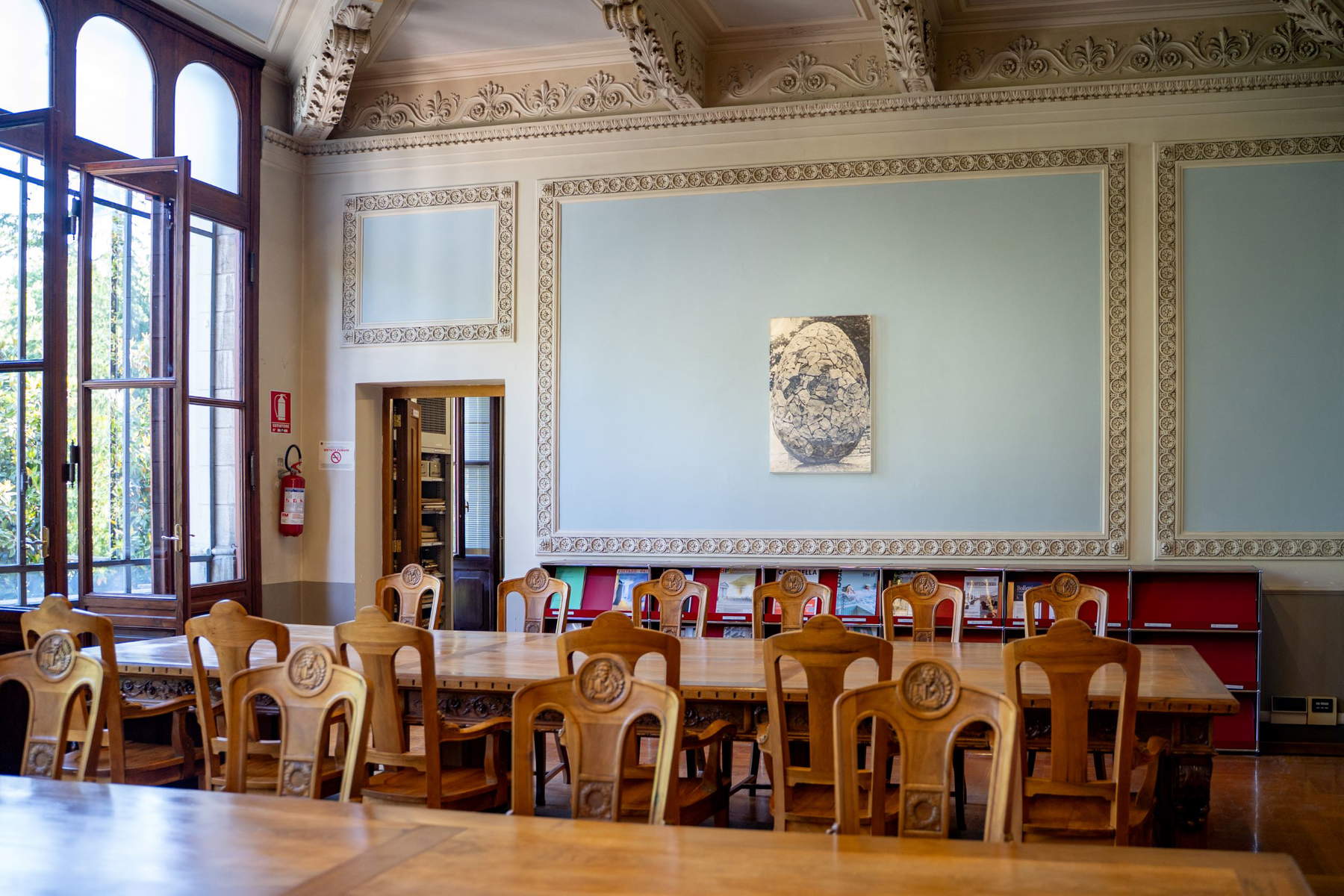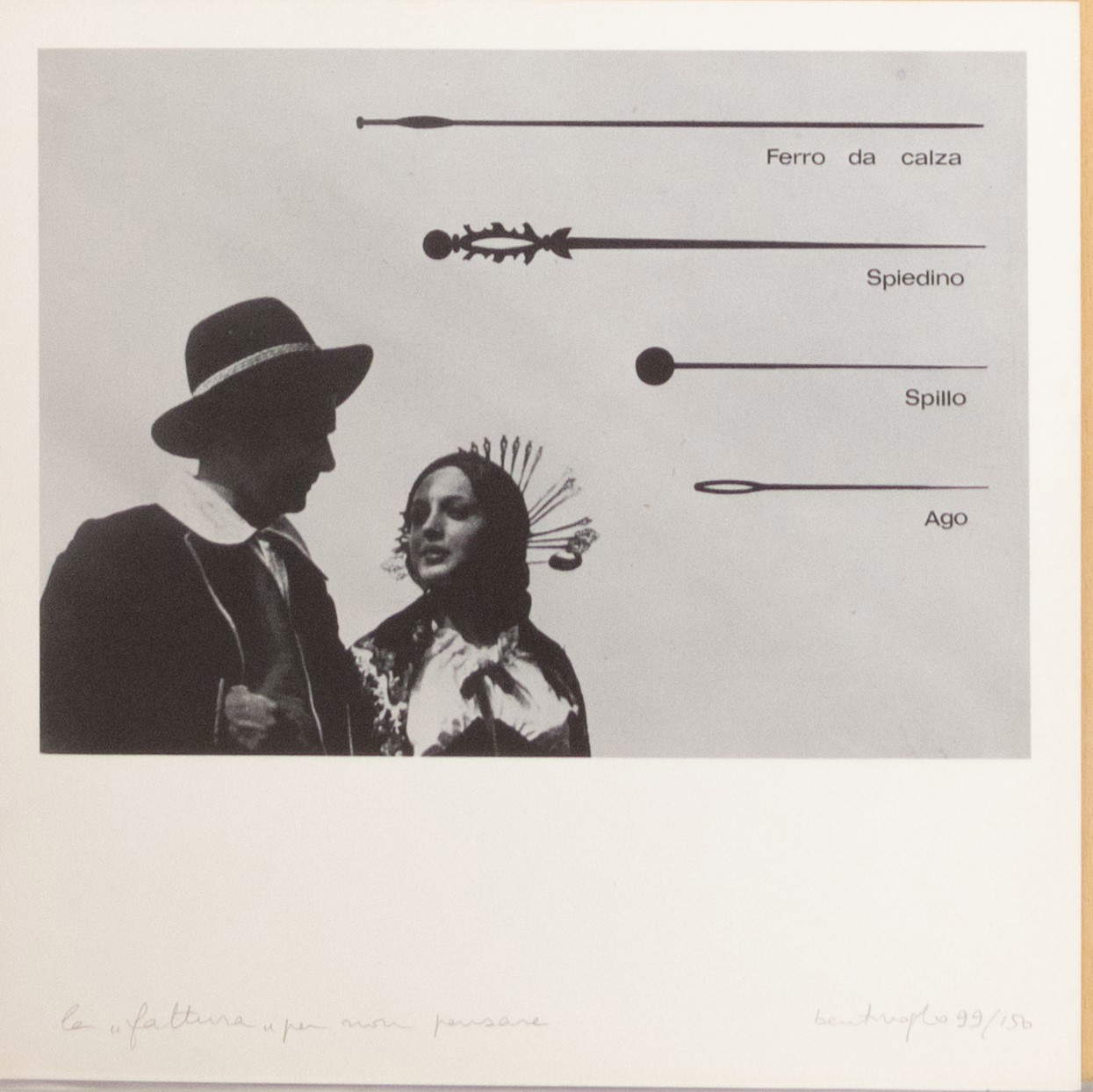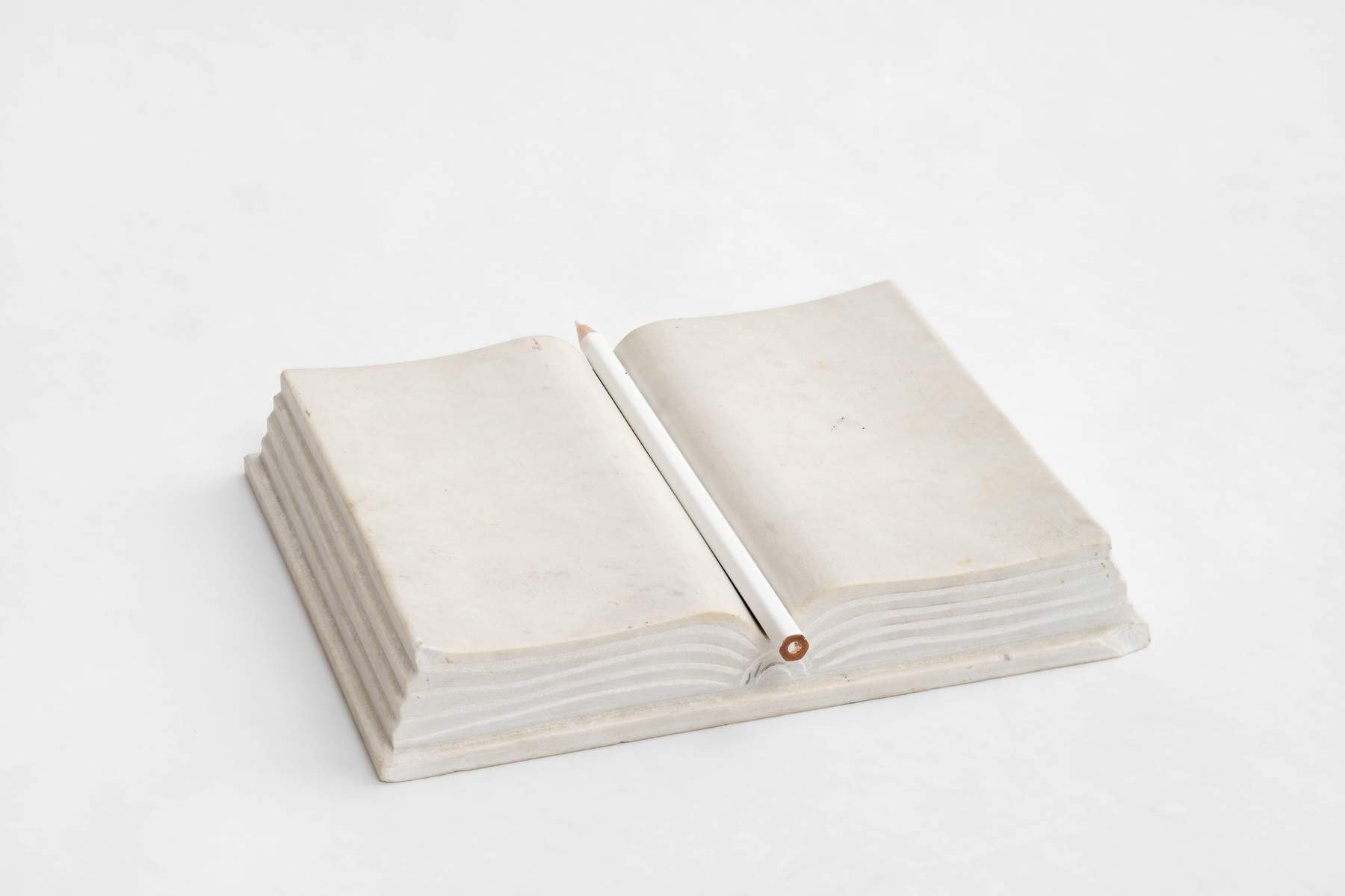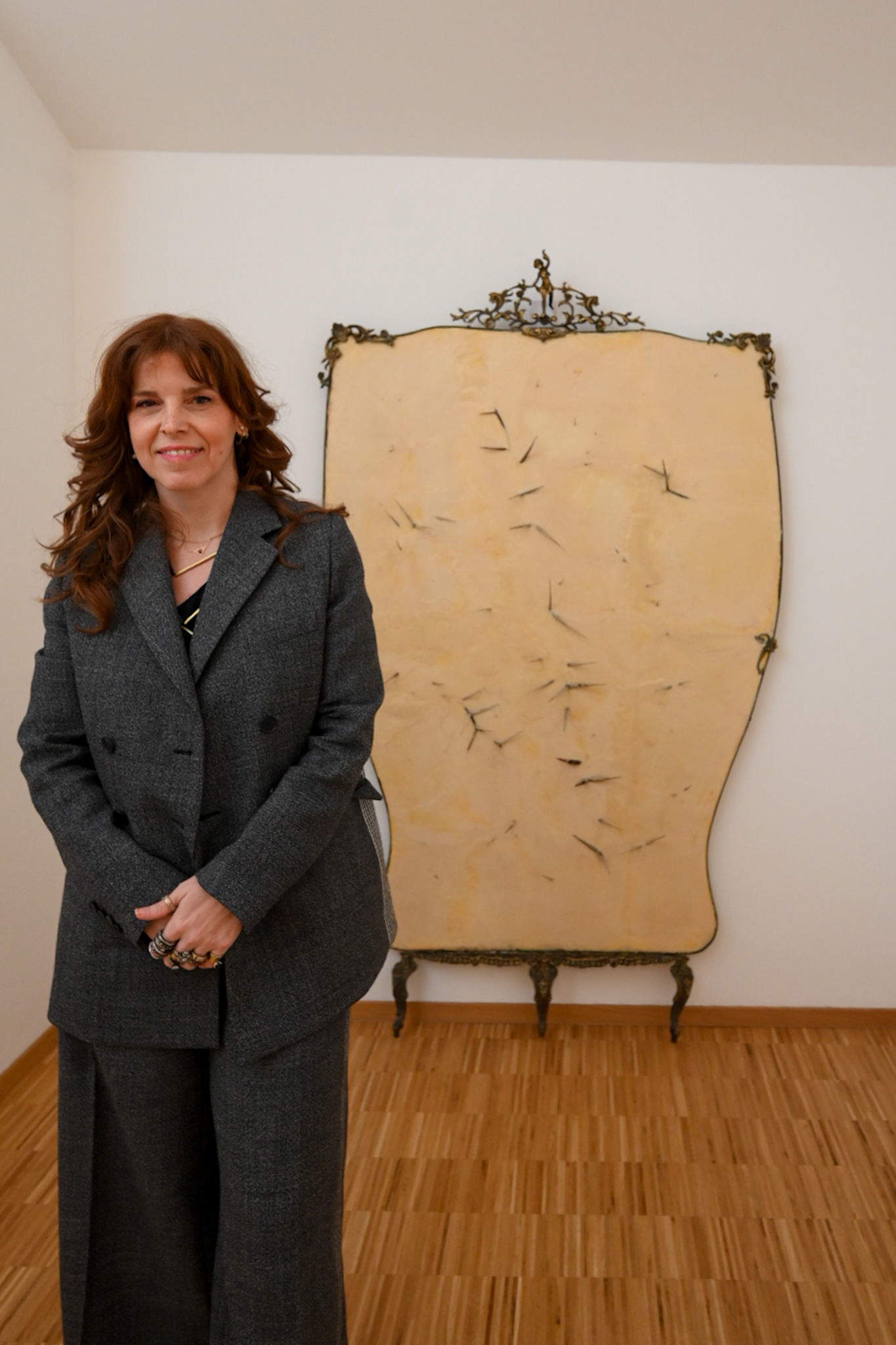TheUniversity of Padua inaugurates, with a project of broad cultural and institutional scope, the first widespread collection of contemporary art explicitly dedicated to female and feminist artistic production. Called Silenzi Eloquenti (Eloquent Silences), the initiative sees the placement of four works by two artists representing two distinct generations: Mirella Bentivoglio (Klagenfurt, 1922 - Rome, 2017) and Silvia Giambrone (Agrigento, 1981). The project, supported by Prorettrice al Patrimonio Artistico Storistico Storico e Culturale Monica Salvadori and the guidance of contemporary art advisor Guido Bartorelli, is part of an institutional framework aimed at making visible an artistic heritage that has for too long been characterized by a marginal presence of works created by women artists. The choice of the title Eloquent Silences reveals a double symbolic significance: on the one hand, it evokes the sporadic and ephemeral presences of women artists in the context of the university heritage, in which prominent works, such as those by the great names of the contemporary (Campigli, Funi, Severini, Manzù, Martini, Venini, Scarpa, Pianezzola, Tasca, Kounellis, Pomodoro, and Isgrò), have always held a predominant place; on the other hand, it recalls the idea of a silence laden with meaning, which is transformed into a voice thanks to the narrative and commitment force of the works on display. In detail, the works that make up the collection are four and come from two artists who, although belonging to different temporal contexts, confront the same theme of violence and gender inequality.
“The new collection was created thanks to funding from the Plan for Contemporary Art 2024, promoted by the General Directorate for Contemporary Creativity of the Ministry of Culture. Our project was one of 40 selected last year, alongside major contemporary art institutions such as Castello di Rivoli Museo d’Arte Contemporanea, Museo d’Modern and Contemporary Art Museion in Bolzano, the Bevilacqua La Masa Foundation in Venice, and the National Gallery of Modern and Contemporary Art in Rome,” explains Monica Salvadori, pro-rector with proxy for Artistic, Historical and Cultural Heritage and proxy for the University Library System. “It is a sign of appreciation for the commitment that our University has made and continues to make to the knowledge and appreciation of contemporary art and creativity in their various expressions, whether by activating courses specifically dedicated to the theme, or by promoting reviews and festivals of supranational caliber, or even through initiatives for the enhancement of knowledge in which we invite artists to a direct confrontation with our students and students and the entire citizenry.”
“The evaluating committee particularly appreciated the quality of the project presented by the curator we identified, Dr. Greta Boldorini, a former doctoral student at our Athenaeum and now an esteemed scholar in the field of the relations between art and feminisms,” stresses Guido Bartorelli, Athenaeum advisor for contemporary art. “We considered libraries to be an ideal exhibition context for the new collection, as places deputed to the transmission and preservation of culture and canon, within which the works we acquired come to create a significant short-circuit that unhinges the idea of neutral and universal knowledge to promote unprecedented reflections on dramatically topical issues.”
“With these acquisitions the Athenaeum intends to give voice to these silences by launching a new collection that finally puts women’s, and feminist, art at the center through works that reflect on gender violence and inequality. It is an important project,” says curator Greta Boldorini, “that triggers current and urgent reflections in places of knowledge transmission and study such as libraries, public spaces open to citizenship and the academic community.”
The works of Mirella Bentivoglio, a pioneer and leading figure in the field of contemporary women’s art, are the fruit of research that has highlighted symbolic language and the possibility of expressing the inexpressible through visual forms that are refined but charged with emotional poignancy. The sculpture The Writing of Silence (1978), made of marble and white pencil and small in size (15x18x2.5 cm), finds its place in the Central Library of Psychology "Fabio Metelli." The work, which recalls the evocative power of books and archetypal symbols, highlights how word and image can intertwine to create a language that overcomes the barriers of traditional communication. The understanding between form and content, a pivotal element of Bentivoglio’s artistic research, also emerges in the large historical print Struttura simbolica (L’Ovo di Gubbio) (size 102x68 cm) exhibited at the Central Library of Engineering. That work was created as a reproduction of the sculpture created in 1976 and represents what many critics call the first feminist public art intervention, a revolutionary gesture in which symbolism becomes the means of claiming a hitherto excluded creative space.

The third work, also by Mirella Bentivoglio, is the silkscreen print on cardboard Semiological Analysis - The ’invoice’ for not thinking (1978, 33x33 cm). The work, donated by the artist’s heirs in memory of Giulia Cecchettin, is part of a narrative path that serves as a warning against gender violence. The heirs, deeply connected to the city and the university through the memory of their grandfather Gian Carlo Bentivoglio, who taught in Padua for many years, wanted through this commemorative gesture to give new life to artistic and cultural memory. The placement of the work in the Someda Library of Information Engineering, also attended by the young victim of feminicide, underscores the symbolic charge and deep social commitment inherent in the Silenzi Eloquenti project.


The other protagonist of the collection is Silvia Giambrone, an artist born in 1981 and active in experimenting with an artistic language that ranges from performance to sculpture, installation to sound and video. Her work Mirror No. 12 (2021, made of bronze, resin, wax and acacia thorns, with dimensions 210x127x13 cm) constitutes the distinctive element of the representation of the most subtle forms of inner and domestic violence. With an unusual material choice, the application of acacia thorns on a mirrored surface, the work transforms the object, traditionally a symbol of reflection and identity, into a simulacrum that highlights everyday tensions and suffering hidden behind appearances of normality. Its evocative power also found a place in the exhibition Italian Art and Human Rights held in 2023 at the United Nations Building in Geneva, further reinforcing the universal nature of the themes addressed.
“I believe that the acquisition of works of art by a public library is truly an exemplary and significant event,” comments Silvia Giambrone. “That it also involves works by women artists is even more significant, not only to fill in bulky absences in an institution’s collection, but to be able to rewrite history and thus interpret it with tools that certainly make it more complex and articulate than it has been told so far.”

The “Fabio Metelli” Library of Psychology also hosts the exhibition The Writings of Silence, a journey that investigates silence as a condition that opens up possibilities and reflections on inexpressibility. Through careful curating, the exhibition offers an interdisciplinary dialogue between psychology, sociology, art, literature, music, philosophy, anthropology, neuroscience, semiotics and mysticism. The exhibition, set up in the exhibition hall on the fifth floor of the Psico building (located at 12/2 Venice Street), can be visited from May 19 to June 27, with extended hours from Monday to Friday from 9 a.m. to 9 p.m. and on Saturdays from 9 a.m. to 2 p.m. This organizational choice aims to ensure maximum usability for both the university community and the citizenry, making the dialogue with art accessible to all.
In parallel, the Central Library of Engineering, located at 20 Via Loredan, offers Unusual Landscapes: dialogues between art and urban space, an installation inspired by the work Symbolic Structure (The Ovo of Gubbio). Within the exhibition itinerary, visitors are invited to reflect on the power of art as a catalyst capable of transforming the urban fabric, going beyond the mere aesthetic sphere to establish a bridge between disciplines, institutions and the city community. The “unusual landscapes” generated by the encounter between artwork and urban space emphasize the function of art to affect the everyday, fostering unprecedented and intense experiences that enrich the perception of the city itself. Finally, the exhibition experience is completed with the bibliographic exhibition Mirror No. 12 at the Beato Pellegrino Library, located at 28 Beato Pellegrino Street. Here, the selection of volumes proposed by artist Silvia Giambrone offers an in-depth look at the texts that inspired the creation of Mirrors. The collection embraces classic and contemporary works, addressing universal themes such as identity, freedom, trauma, creativity and the meaning of life. The exhibition is accessible Monday through Friday with hours from 9 a.m. to 10 p.m., while on Saturdays and Sundays it is guaranteed to be accessible from 9 a.m. to 6 p.m. A virtual version of the exhibition accessible through Galileo Discovery is also planned, expanding the scope and accessibility of the initiative. In order to amplify the educational experience and actively engage the community, two traveling guided tours are organized through all four exhibition venues. The first tour is scheduled for the afternoon of Friday, May 23, and the second for Friday, May 30, with departure set at the Central Engineering Library at 4 p.m. The total duration of the tours is estimated at about two hours and participation is free, subject to availability of places, with reservations made possible through the portal www.visitesilenzi.eventbrite.it.
The choice to place the works within university libraries is strategic and symbolic. Libraries, places of preservation and production of knowledge, are re-imagined here as spaces where art interacts with written culture, giving rise to exhibitions that establish paths of knowledge in which the aesthetic dimension is intertwined with the intellectual one. In a context in which knowledge is transmitted not only through books but also through dialogue with images and forms, bibliographic exhibitions accompany the works with a series of texts that deepen their meaning, offering visitors additional interpretative tools. The exhibition configuration, therefore, expands far beyond mere visual presentation, becoming a true laboratory for interdisciplinary reflection. From a cultural-historical perspective, the path of women’s art has gone through complex and often contradictory phases. The presence of Mirella Bentivoglio in the collection, for example, harks back to a time when feminist engagement was articulated through innovative and provocative modes, marked by a profound sense of rupture with traditional logics. Her experience, also witnessed by the famous exhibition Materialization of Language curated in 1978 for the 38th Venice Biennale, is configured as a fundamental point of reference, representing not only an aesthetic rupture but also a cultural affirmation aimed at recognizing and enhancing a hitherto marginal creative space. In parallel, the figure of Silvia Giambrone introduces a contemporary sensibility in which the body and its politics become the privileged ground for investigating the subtleties of everyday violence. With Mirror No. 12, the artist transforms a mirror, traditionally associated with the reflection of the image, into a critical manifesto capable of revealing the tensions and crises that, in an often subtle but inexorable manner, permeate inner life and interpersonal relationships.
The structuring of Silenzi Eloquenti in the different exhibition spaces, from the “Fabio Metelli” Library to the Central Library of Engineering, passing through the Someda Library and concluding at the Beato Pellegrino Library, is a sign of the commitment to integrate the artistic dimension into the fabric of daily university life. The initiative, with its aseptic and analytical approach, invites not only an aesthetic but also a social reading of current issues, offering the public interpretive tools that go far beyond mere visual contemplation.
 |
| A women's art collection is born in Padua to reflect on violence and gender inequality |
Warning: the translation into English of the original Italian article was created using automatic tools. We undertake to review all articles, but we do not guarantee the total absence of inaccuracies in the translation due to the program. You can find the original by clicking on the ITA button. If you find any mistake,please contact us.